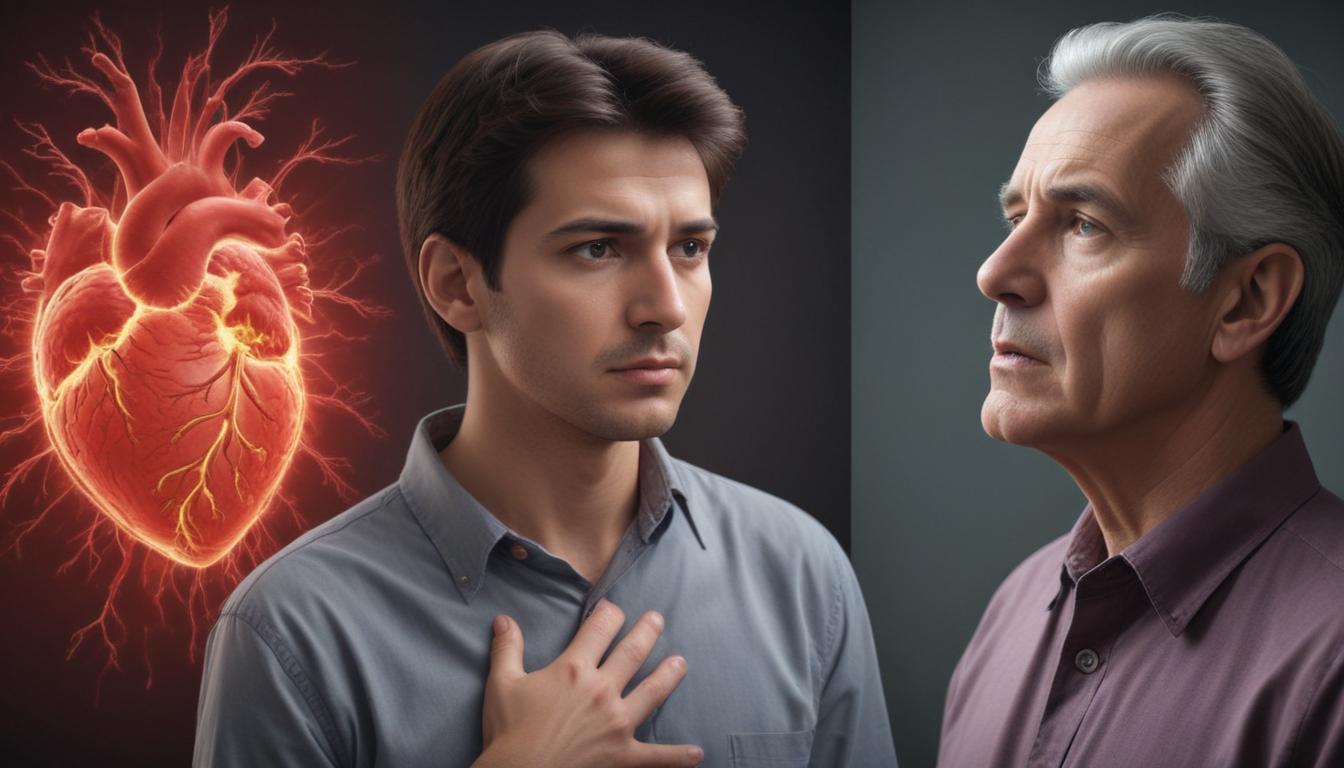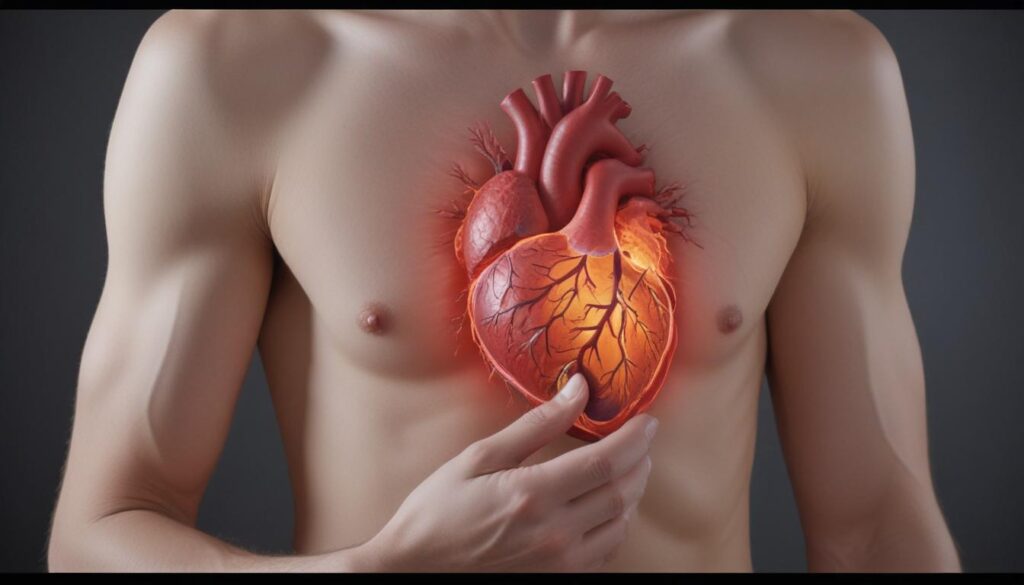Now Reading: Know These Heart Attack & Stroke Signs
- 01
Know These Heart Attack & Stroke Signs
Know These Heart Attack & Stroke Signs

The thought of a sudden, life-altering health event like a heart attack or a stroke can be deeply unsettling. It’s a fear that lives in the back of many minds, fueled by stories of loved ones or news reports of unexpected tragedies. This uncertainty can leave you feeling powerless, wondering what these conditions really are and if there’s anything you can do to protect yourself and your family. The good news is that knowledge is your greatest tool. By understanding the what, why, and how of heart attacks and strokes, you can transform that fear into proactive, life-saving action.
This guide is designed to demystify these two major cardiovascular events. We will break down exactly what happens during a heart attack and a stroke, highlight their crucial differences, and most importantly, provide you with clear, actionable steps for prevention and emergency response. This information can empower you to take control of your cardiovascular health and face the future with confidence instead of anxiety.
What is a Heart Attack A Closer Look at Your Heart
A heart attack, known in the medical world as a myocardial infarction, is fundamentally a plumbing problem within the heart’s own circulation system. Your heart is a muscle that works tirelessly, and like any muscle, it needs a constant supply of oxygen-rich blood to function. This blood is delivered through a network of vessels called the coronary arteries. A heart attack occurs when one of these arteries becomes severely narrowed or completely blocked, cutting off blood flow to a section of the heart muscle.
This blockage is most often caused by coronary artery disease, a condition where a waxy substance called plaque builds up on the inner walls of the arteries over many years. If a piece of this plaque breaks open, a blood clot can form around it, creating a dam that stops blood from getting through. Deprived of oxygen, the cells in that part of the heart muscle begin to suffocate and die. The longer the blockage remains, the more extensive the damage to the heart, which is why immediate medical attention is absolutely critical.

What is a Stroke A Brain Under Attack
While a heart attack is an assault on the heart, a stroke is an assault on the brain. Often called a “brain attack,” a stroke happens when the blood supply to part of the brain is interrupted or drastically reduced, preventing brain tissue from getting the oxygen and nutrients it needs to survive. There are two main types of stroke. The most common is an ischemic stroke, which is similar to a heart attack in that it’s caused by a blockage, usually a blood clot, in an artery leading to the brain.
The other type is a hemorrhagic stroke, which occurs when a blood vessel in the brain leaks or bursts open, causing bleeding into the surrounding brain tissue. This bleeding puts excessive pressure on brain cells and damages them. In either case, the result is the same. Brain cells begin to die within minutes. This can lead to lasting brain damage, long-term disability, or even death. The specific abilities lost depend on where in the brain the stroke occurs and the extent of the damage.
Key Differences and Overlapping Risks
The simplest way to understand the distinction is by location. A heart attack is a circulation crisis in the heart, and a stroke is a circulation crisis in the brain. They are distinct medical emergencies that affect different organs and produce different primary symptoms. A heart attack is characterized by chest pain and symptoms related to a struggling heart, while a stroke is defined by sudden neurological deficits like facial drooping, arm weakness, and speech problems.
Despite these differences, heart attacks and strokes are closely related and share a long list of common risk factors. They are both diseases of the vascular system. High blood pressure, or hypertension, is the single biggest contributor to both conditions, as it damages artery walls over time, making them more susceptible to blockages and ruptures. Other major overlapping risks include high cholesterol, diabetes, smoking, obesity, a poor diet, and a lack of physical activity. Effectively managing any of these risk factors significantly lowers your chances of experiencing either event.
Prevention Your Best Defense Against Cardiovascular Events
Your lifestyle is your most powerful weapon in the fight against heart attacks and strokes. Making consistent, healthy choices can dramatically reduce your risk and protect your entire cardiovascular system. The foundation of prevention is a balanced, nutrient-rich diet. Focus on eating plenty of fruits, vegetables, whole grains, and lean proteins like fish and poultry. At the same time, work to limit your intake of processed foods, sugary drinks, sodium, and unhealthy saturated and trans fats.
Alongside a healthy diet, regular physical activity is non-negotiable. Aim for at least 150 minutes of moderate-intensity aerobic exercise, like brisk walking, swimming, or cycling, each week. It’s also vital to find healthy ways to manage stress, get enough quality sleep, and if you smoke, quitting is the single most impactful step you can take for your health. Finally, partner with your doctor for regular check-ups to monitor your blood pressure, cholesterol levels, and blood sugar, allowing you to catch and manage any potential issues early.
Recognizing the Signs and Acting Fast
Knowing the warning signs and acting without hesitation can save a life and minimize long-term damage. For a heart attack, the most common symptom is chest discomfort that can feel like pressure, squeezing, fullness, or pain. However, symptoms can vary and also include pain in one or both arms, the back, neck, jaw, or stomach. Other key signs are shortness of breath, breaking out in a cold sweat, nausea, or lightheadedness. It is important to know that women, in particular, may experience more subtle symptoms, such as unusual fatigue.
For a stroke, the F.A.S.T. acronym is the best way to remember the signs. F stands for Face Drooping, where one side of the face may droop or feel numb. A stands for Arm Weakness; one arm may feel weak or drift downward when raised. S is for Speech Difficulty; speech may be slurred or hard to understand. T stands for Time to call 911 immediately if you see any of these signs, even if they seem to go away. In both a heart attack and a stroke, every second is critical. Never try to drive yourself or someone else to the hospital. Calling an ambulance ensures that medical professionals can begin life-saving treatment on the way.


































